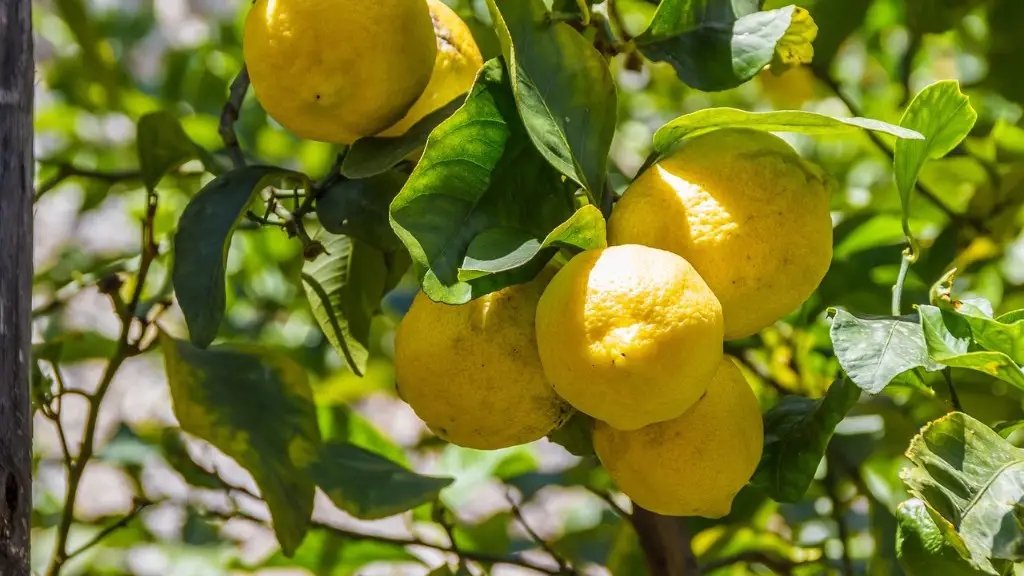When it comes to moving a palm tree in the UK, it’s important to remember that the process can be tricky and takes considerable effort to do it right. A lot of people assume that the best way to move a palm tree is to simply yank it out of the ground and transport it, but this can actually kill it. The truth is, moving a palm tree without killing it is much more complicated – and requires special preparation and care to protect the tree and make sure it survives the move.
Most palm trees don’t tend to do well in the cold winter conditions of the UK, and therefore can be tough to transport. That’s why it’s important to consider the environmental factors before beginning the transplant. In general, you’ll want to move your palm tree when it is most active (the summer months when temperatures are mild) and keep it out of direct sunlight while it is being relocated. You’ll also want to be sure that the new soil is appropriate for the tree, and that you’ve adequately watered it and provided the nutrients necessary for its survival.
The best way to move a palm tree without killing it is to dig it up carefully, making sure to keep the root ball intact. You’ll want to be sure to keep the roots intact, too, as they are a vital part of the health of the palm tree. Be careful not to damage the trunk or any of the limbs when removing it as these could be irreparable. The trunk should also be wrapped carefully and strapped onto a dolly for protection during the move. Additionally, you should take steps to protect the tree from shock to make sure it survives the move.
Once the tree has been removed from the ground and put onto the dolly for transport, you’ll want to move it as quickly as possible to its new location. The new location should be prepared beforehand to ensure that the tree is planted in a suitable environment, as the roots and trunk need to take some time to adjust to the new soil and climate. Additionally, you should water the tree deeply after it has been planted, and continue to monitor and water it regularly. This will help the tree to become accustomed to its new surroundings and avoid damage that could be caused by transplant shock.
Finally, it’s important to remember that it can take a while for a transplanted palm tree to adjust to its new environment. While it may take some time for the tree to acclimatise, it’s vital you provide it with the appropriate care during that period to ensure its survival. Providing the palm tree with adequate light, water, and nutrients from the start will greatly improve the chances of it thriving and living a long, healthy life in its new home.
Soil Preparation
When moving and relocating a palm tree, it’s important to choose a new location and soil for it carefully. Most palm trees prefer a soil that is slightly acidic with a pH balance between 5.5 and 7.5. Also, the soil should have good drainage and be high in organic material, such as compost or manure. Additionally, it is important to mix the soil with a layer of mulch or sawdust to help the tree retain moisture and protect the root system.
Wrapping the Trunk
When moving a palm tree, it’s important to protect the trunk and limbs from damage. This can be done by carefully wrapping the tree with a burlap sack or sheet to protect it during transport. The wrapping should be done securely but not too tightly to ensure the tree can still breathe. If additional protection is necessary, the trunk and limbs can be strapped with a soft rope or wire, but this should be done loosely and with extra care.
Transport
When transporting a palm tree, it’s important to keep it stable and out of direct sunlight if possible. The best way to transport a palm tree is on a dolly or other flat surface. The tree should be securely strapped down and cushioned with blankets or foam to ensure it doesn’t move around during transport. Additionally, protect the tree from any sudden bumps or shocks by driving slowly and carefully.
Aftercare
Once the palm tree has been successfully transplanted to its new location, it is important to provide it with the care and attention it needs in order to thrive. This includes providing it with plenty of sunlight, water, and nutrients, and monitoring it regularly to ensure it is healthy and stable. Additionally, the soil should be kept evenly moist and the tree should be protected from drafts or gusts of wind that could cause damage.

